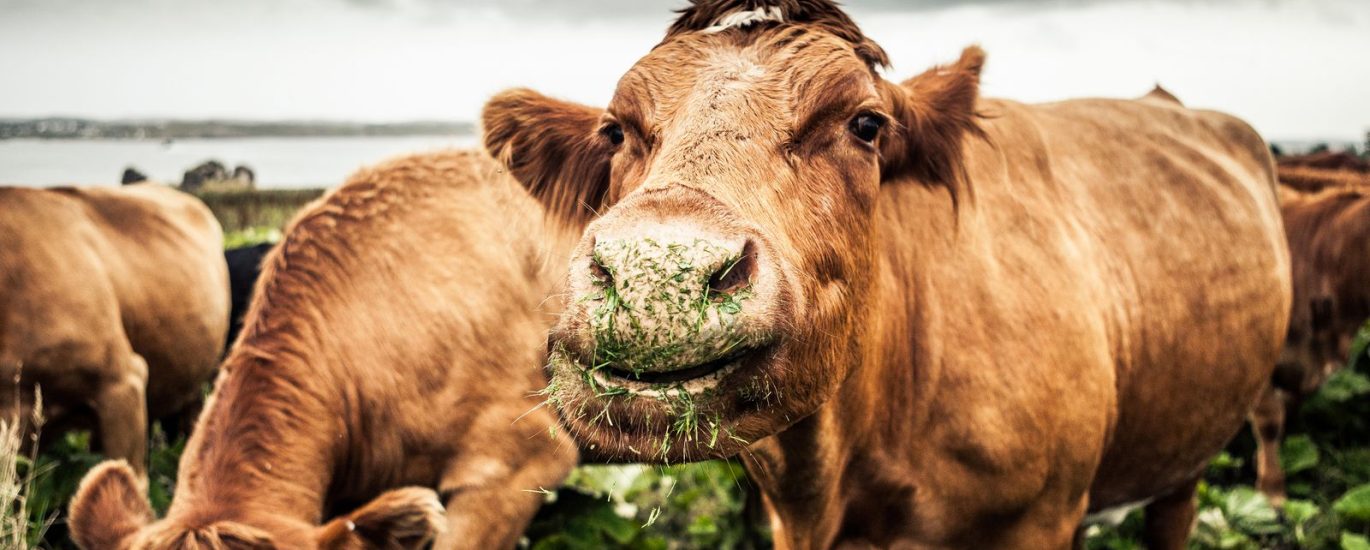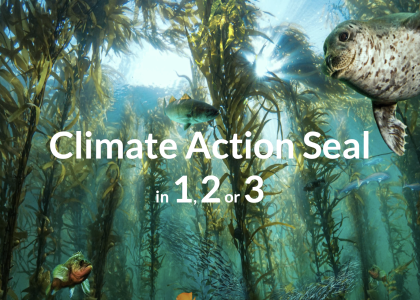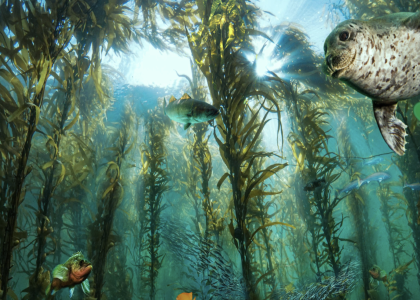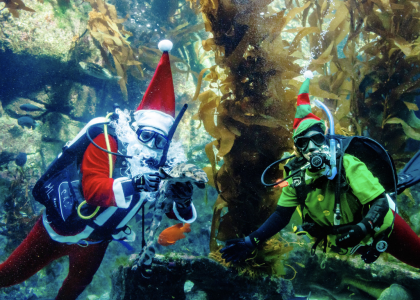It’s a meat- and cheese-eater’s dream: Calm and happy livestock that spend their lives well-cared for and well-fed before their products end up on your table. But there’s a dark cloud on the horizon, and it’s made of methane, nitrous oxide and ammonia.
Free-range barns reduce stress on animals, but they can release nearly 50% more ammonia into the environment than contained barns, where cows are confined.
Switzerland’s Federal Office for Agriculture
Switzerland is the second-largest emitter of ammonia in Europe after the Netherlands, responsible for about 43,000 tons per year. Nearly 75 percent of nitrous oxide and 80 percent of methane emissions can be traced to the agricultural sector. With the 2015 Paris climate accord, nations around the world pledged to cut emissions of those gases, along with ammonia, by 30 percent from 1990 levels. But countries like the Netherlands and Switzerland aren’t on target to meet those goals, and part of that is due to the farms: Open barns allow more gases to escape into the atmosphere.
But there are solutions out here and they include the use of seaweed supplementation.
Seaweed supplements can reduce enteric methane by over 80 percent
The red macroalgae (seaweed) Asparagopsis spp. has shown to reduce ruminant enteric methane (CH4) production up to 99% in vitro. The objective of this study was to determine the effect of Asparagopsis taxiformis on CH4 production (g/day per animal), yield (g CH4/kg dry matter intake (DMI)), and intensity (g CH4/kg ADG); average daily gain (ADG; kg gain/day), feed conversion efficiency (FCE; kg ADG/kg DMI), and carcass and meat quality in growing beef steers.
Twenty-one Angus-Hereford beef steers were randomly allocated to one of three treatment groups: 0% (Control), 0.25% (Low), and 0.5% (High)
A. taxiformis inclusion based on organic matter intake. Steers were fed 3 diets: high, medium, and low forage total mixed ration (TMR) representing life-stage diets of growing beef steers. The Low and High treatments over 147 days reduced enteric CH4 yield 45 and 68%, respectively.
However, there was an interaction between TMR type and the magnitude of CH4 yield reduction. Supplementing low forage TMR reduced CH4 yield 69.8% (P <0.01) for Low and 80% (P <0.01) for High treatments. Hydrogen (H2) yield (g H2/DMI) increased (P <0.01) 336 and 590% compared to Control for the Low and High treatments, respectively. Carbon dioxide (CO2) yield (g CO2/DMI) increased 13.7% between Control and High treatments (P = 0.03).
No differences were found in ADG, carcass quality, strip loin proximate analysis and shear force, or consumer taste preferences. DMI tended to decrease 8% (P = 0.08) in the Low treatment and DMI decreased 14% (P <0.01) in the High treatment. Conversely, FCE tended to increase 7% in Low (P = 0.06) and increased 14% in High (P <0.01) treatment compared to Control.
The persistent reduction of CH4 by A. taxiformis supplementation suggests that this is a viable feed additive to significantly decrease the carbon footprint of ruminant livestock and potentially increase production efficiency.
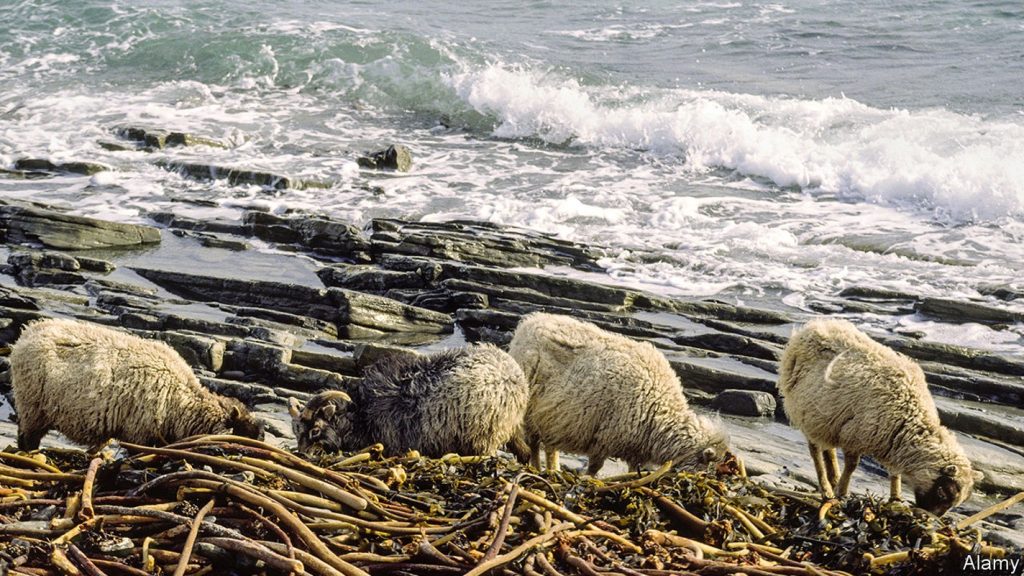
The answer to livestock that burp methane may in other words be seaweed
Ancient Greek writings describe livestock eating seaweed, as do Icelandic sagas. And, as the picture shows, sheep on North Ronaldsay, in the Orkney Islands of Scotland, still graze on the stuff. But that is now seen as unusual. It may not be in the future, however, as research conducted in Australia and New Zealand suggests algavory of this sort may reduce greenhouse-gas emissions from stock animals.
The research in question is being co-ordinated by Csiro, Australia’s main science agency. The project is looking into microbes that inhabit the stomachs of ruminants such as cattle and sheep. These bugs transform those animals’ fibrous fare into energy-rich molecules, some of which the host animal is able to absorb and utilise.
But the we have to grow it and you can help
That’s where we come in. We are financing climate actions with main focus on seaweed / kelp farming and you can help by buying algae ropes.
With a unique buyback model where you help reduce the CO2 emission and make us produce different products based on the harvested algae we can offer you to buy back your algae ropes for up to three times you initial buy after only four years.
This is how it works;
- You buy algae rope though our webshop
- The algae rope is put in the ocean in one of our algae farms
- Your algae rope is registered into a blockchain controlled digital database and connected to your profil
- The algae grows for 6 months and are then harvested, processed and sold
- After each harvest we set aside your part of the income to your buyback account
- The algae rope is put out again in the ocean and harvested again after new 6 months.
- In totalt your algae rope is put in the water 8 times in 4 years
- 4 years after you bought your algae rope we offer you to buy back your algae rope
- If you want to use some of or the whole buy back amount to buy algae rope again you can do this before we pay back


